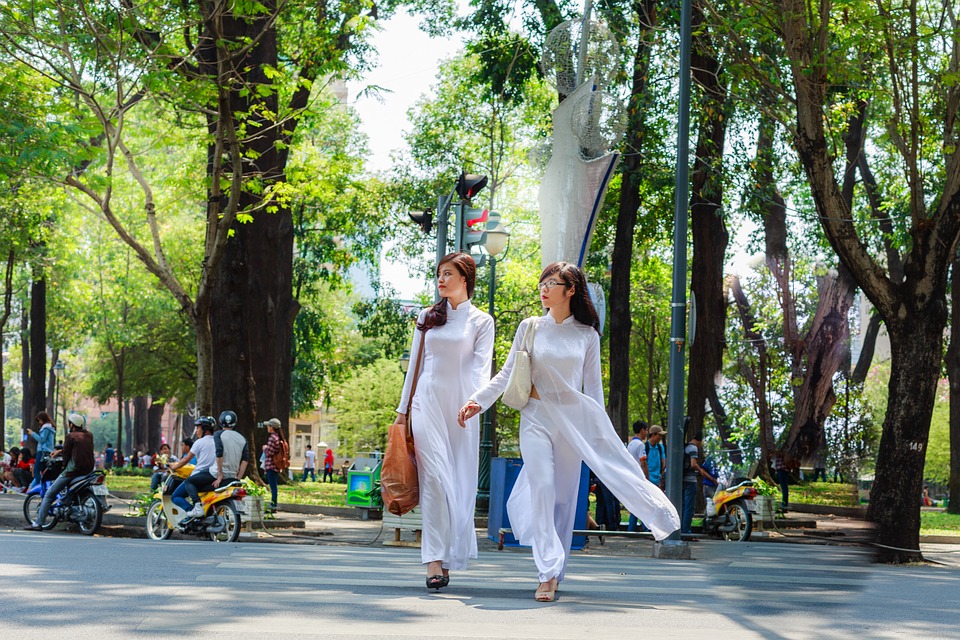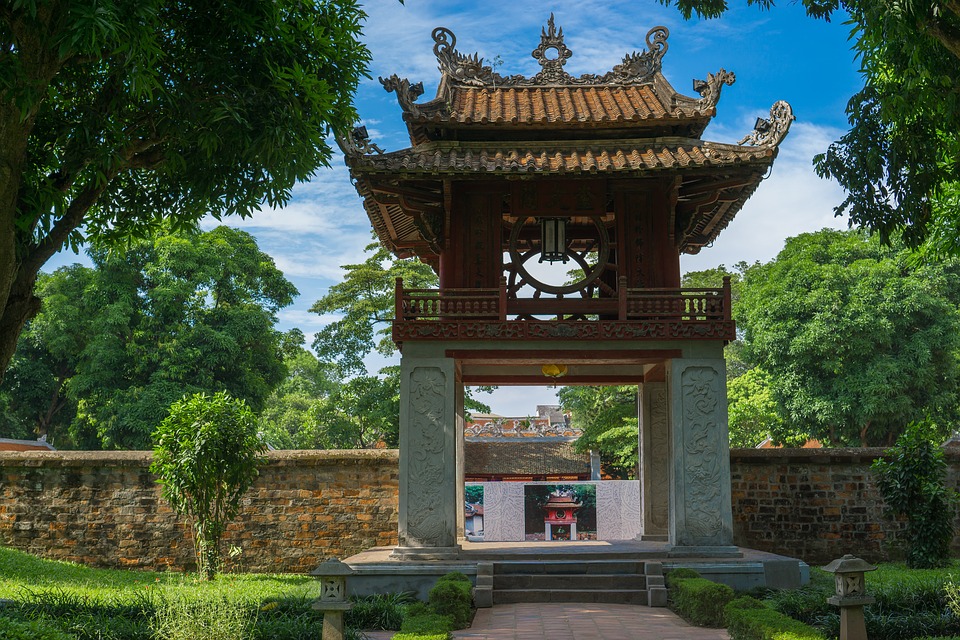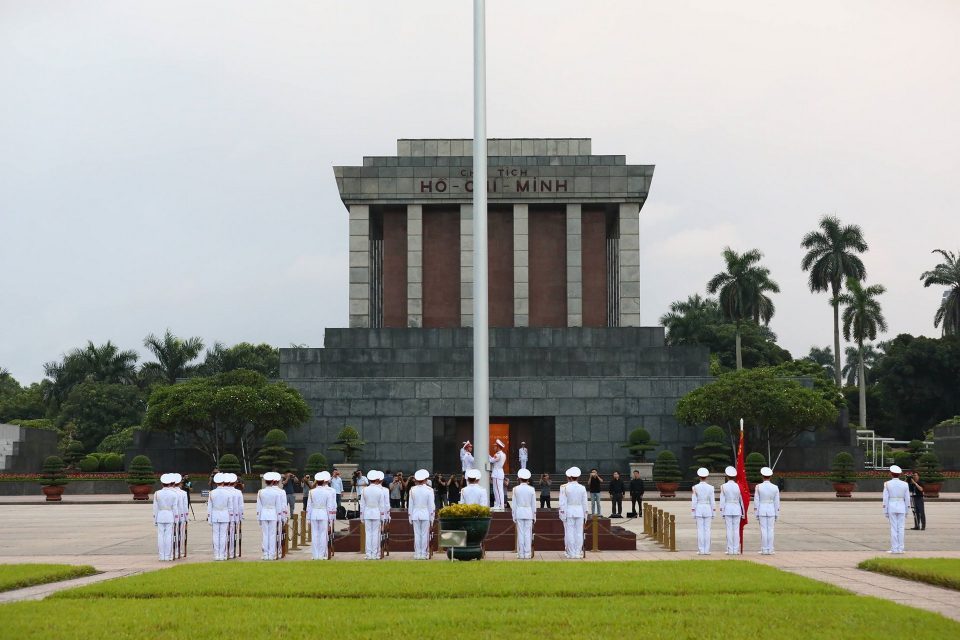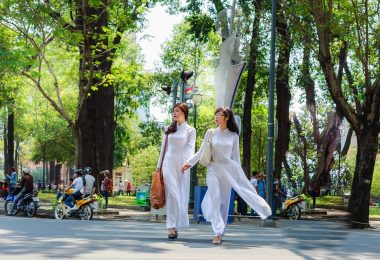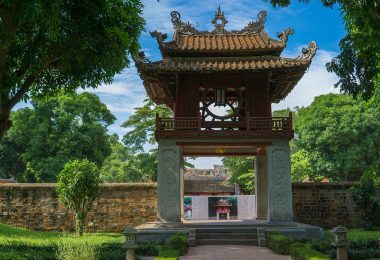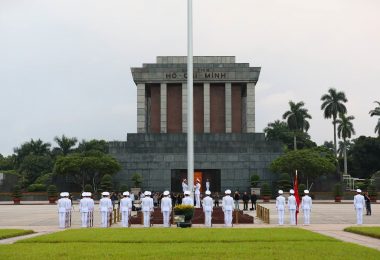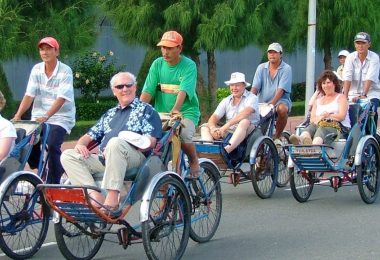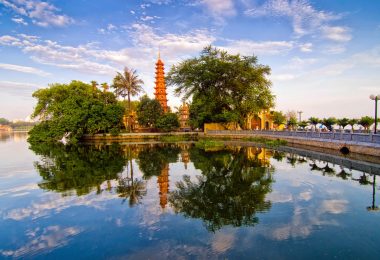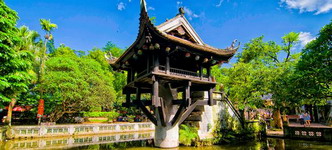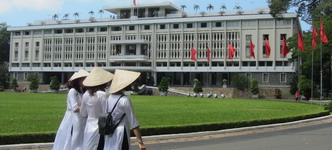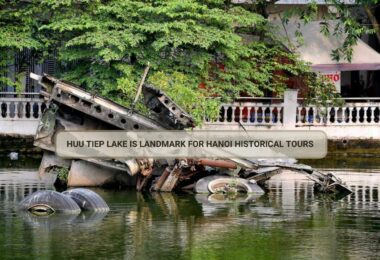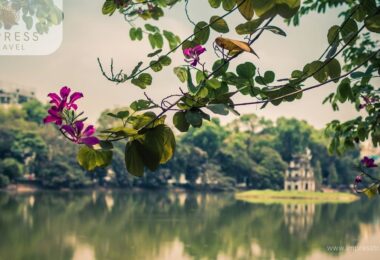The Hanoi Flag Tower is one of the striking historic structures that attracts tourists from abroad. It is not only a beloved historical cultural relic that attracts visitors from all over the world, but its breathtaking vistas further pique their curiosity.
The Historical Significance Behind the Hanoi Flag Tower Monument
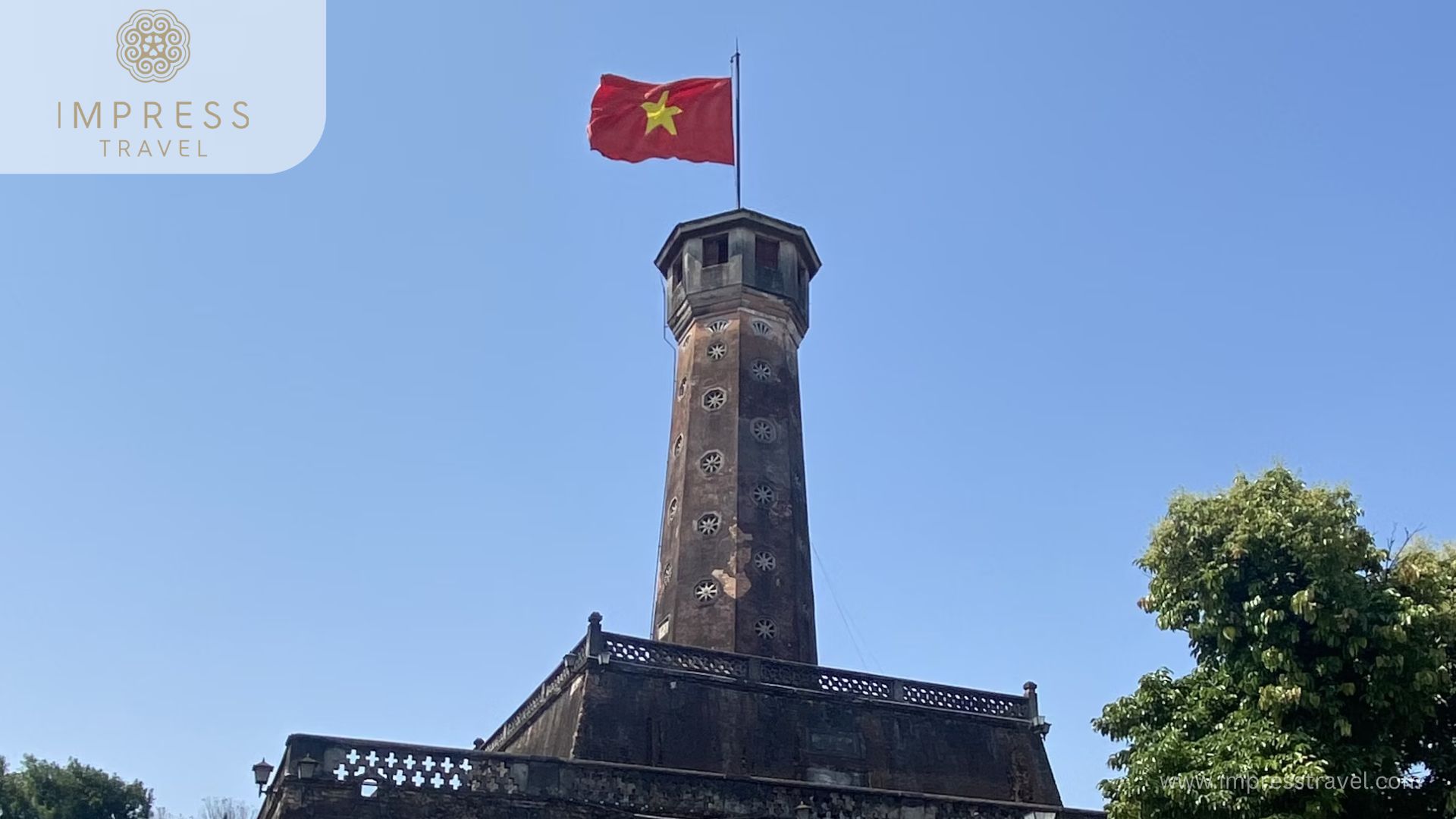
The history of Hanoi Flag Tower
The Hanoi Flag Tower, located in the Vietnam Military History Museum’s Ba Dinh District, is a proud symbol of the nation’s protracted independence movement. Built between 1805 and 1812, during the Nguyen dynasty, it saw significant historical events in Vietnam. In particular, Vietnam ascended the peak in 1954 to retake sovereignty over its territory, marking the end of colonialism. This historic incident, which personified unflinching resolve and unbreakable commitment, struck a deep chord.
War has had an impact on the Hanoi Flag Tower over the years, but the structure has proven to be resilient in the face of adversity. It has fought with foreign forces in a variety of ways, including opposing the French in the nineteenth century and playing a defensive role in the Vietnam War. Nonetheless, it continued to depict the story of a single country fighting for independence despite overwhelming circumstances. When the Vietnamese national flag was raised atop this edifice during the August Revolution in 1945, it reached its zenith of significance.
The Hanoi Flag Tower, located within the Thang Long Imperial Citadel complex, is an architectural masterpiece and a well-known symbol of Hanoi’s tenacious capital. It demonstrates how Hanoi’s cultural identity endures despite the transformation, and this location was designated as a historical landmark in 1989. Climbing to its highest slopes provides vistas of the modern city layout mixed against relics from bygone ages. The tower provides a unique view of Hanoi’s history and progress, from the calm banks of Hoan Kiem Lake to the monotony of Ba Dinh Square.
See Hanoi’s character defined by a magnificent blend of ancient and modern activities from the top of the Flag Tower. From the majestic gates of the past to the busy streets of modern-day Hanoi, there are layers upon layers of history to be unearthed at every step. This fusion of the ancient and the modern perfectly captures the essence of Vietnam’s capital: historical narratives infused with the vitality of the modern era. As the sun sets and warm hues wash the Hanoi Flag Tower, it’s difficult not to be in awe of its strength and tenacity.
The Magnificent Resplendence of the Hanoi Flag Tower Monument
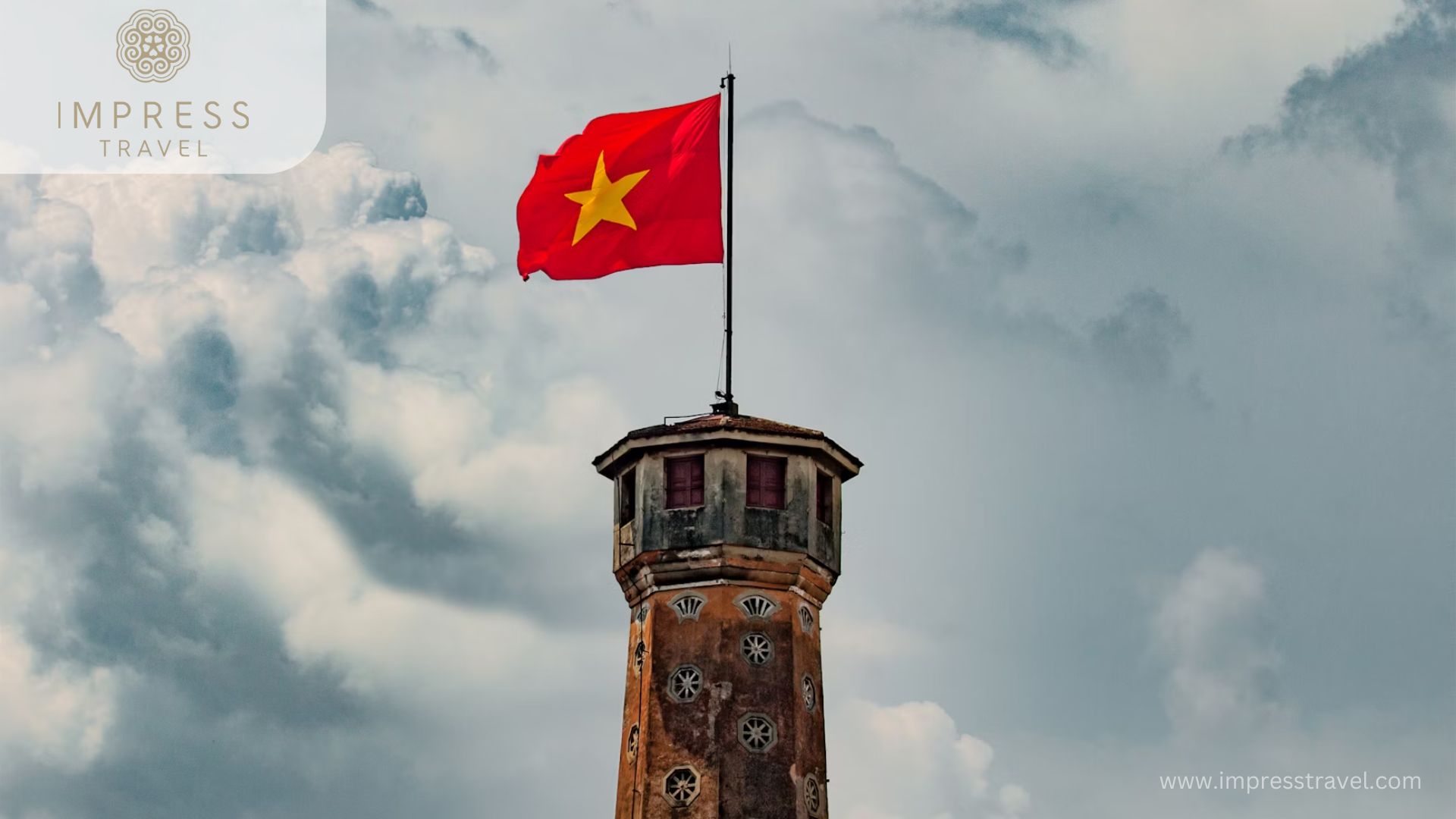
Hanoi Flag Tower
With three pedestal tiers and a columnar trunk, the Hanoi Flag Tower‘s majestic 33.4-meter height is visible. Its base is made up of square truncated pyramids that gradually shrink in size as they ascend, surrounded by thick brick walls. The initial pedestal, which is 42.5 meters long and 3.1 meters high, welcomes visitors with twin staircases that go upward.
The second floor measures 27 meters long, 3.7 meters high, and has four doorways. Each door has Chinese characters etched above it, including “Nghenh Huc" (welcoming the early light) on the east, “Hoi Quang" (reflecting light) on the west, and “Huong Minh" (facing the light) on the south, however there is no inscription on the north entrance.
Each side of the third floor is 12.8 meters long and 5.1 meters tall, with a stairwell door facing north. The column is 18.2 meters tall and attractively octagonal. Within its walls, a 54-step spiral staircase rises, lit by a soothing radiance that streams through 39 magnificent flower-shaped windows and 6 fan-shaped openings, beckoning visitors seeking beauty and history to ascend.
From the bottom, it appears to be an eight-sided pavilion measuring 3.3 meters tall. The tower has eight windows, each of which provides a stunning view of the surroundings. The Hanoi Flag Tower is not only a masterpiece of architecture and mythology, but also a testament of survival and perpetuity that draws visitors from all over the world.
It looks great because it is suited for the ancient style and is light from multiple angles. This motivates overseas tourists to feel quite excited when they see it for the first time. The lighting aspect has an unexpected impact on the tower’s architecture, allowing spectators to appreciate all of its finer details.
An Ultimate Guide to Visiting the Hanoi Flag Tower Monument
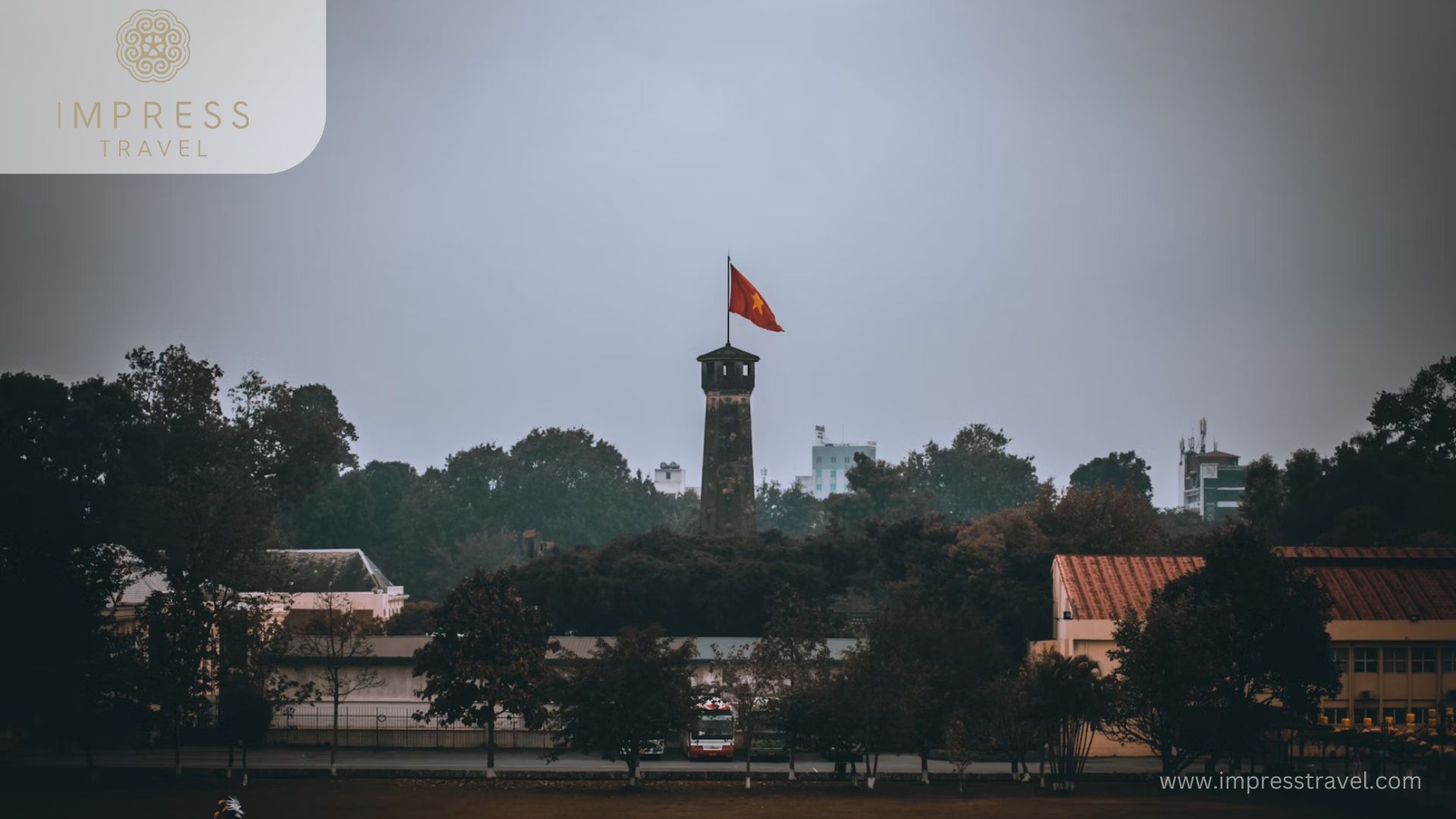
Guide to Visit the Hanoi Flag Tower
The Hanoi Flag Tower, one of the city’s earliest historical sites, is located inside the Vietnam Military History Museum on Dien Bien Phu Street in the Ba Dinh District. Tourists can visit this attraction every day from 8 A.M. to 5 P.M. Admission costs 20,000 VND per person, however seniors over 60 and students enjoy a 50% discount. Anyone who participated in the Revolution, as well as students under the age of fifteen, can enter for free.
The Hanoi Flag Tower, located in the middle of Hanoi, is easily accessible by practically all kinds of private and public transportation. It is less than a kilometer from Hoan Kiem Lake. When driving or riding a motorcycle from Hoan Kiem Lake, take Trang Thi Street, then Cua Nam Street, and finally Dien Bien Phu Street. Continue straight ahead until you reach the intersection of Dien Bien Phu and Nguyen Tri Phuong, which houses the Hanoi Flag Tower.
Visitors who are not sure how to travel to the Hanoi Flag Tower can take a variety of types of transportation. Visitors can take a taxi or use ride-hailing apps like Grab. There is also the city bus system to consider, which provides drop-off spots across the city, including numerous near the Hanoi Flag Tower that are conveniently located. Buses 01, 18, 32, 34, and 45 all stop near the tower.
When planning a visit to the Hanoi Flag Tower, it is important to adhere to a set of guidelines designed to ensure a respectful and pleasant experience for all. These guidelines include:
- Follow Monument Rules: Respect the monument’s rules to preserve its history. Do not damage artifacts or the landscape. Writing, drawing, or carving on historical artifacts is not allowed.
- Dress Appropriately: Dress neatly when visiting Hanoi’s Flag Tower. Avoid very short shorts or skirts, as they might be seen as disrespectful.
- Avoid Certain Activities: To keep the monument secure and orderly, some activities are banned. Do not smoke or engage in disruptive or risky behaviors.
- Do Not Bring Banned Items: Weapons, flammable, or explosive items are not allowed for safety reasons.
- Keep the Monument Clean: Park in designated areas and take care of your belongings. Do not litter and dispose of trash properly to keep the monument clean and beautiful.
By adhering to these rules, the Hanoi Flag Tower can continue to be a visually stunning and well-preserved piece of history for future generations, allaying the concerns of the locals and government regarding the preservation of the historical vista of the city. Following these guidelines not only preserves the tower’s historical significance but also ensures that every visitor has a positive experience and doesn’t encounter any uncomfortable situations.
A culinary stop awaits after visiting the historic Hanoi Flag Tower
After making the effort to tour the Hanoi Flag Tower‘s facilities, the following are some of the greatest places to eat and enjoy a satisfying meal:
Location: 10A Tran Phu, Ba Dinh District
Essence Restaurant is well positioned for a supper after a long day or when visiting Hanoi’s historical attractions because it is on Tran Phu Street in the Ba Dinh area. This restaurant is well-known for its vibrant atmosphere and wide menu, which includes both traditional family meals and a variety of Vietnamese street food options. Dining there is made comfortable and delightful by the delicious theme of the ancient villas and the energetic and helpful service.
Location: 151 Phung Hung Street, Hoan Kiem District
SushiLAB Restaurant aims to provide high-quality sushi, sashimi, and other Japanese delicacies to customers eager to taste Japanese food. In contrast to the exterior, the inside of the SushiLAB Restaurant is as diversified as possible, with the flavors of each dish depicted in the least difficult and ceremonial way possible. The ingredients used at this restaurant, like the food served, are fresh and high-quality, obtained from Japan.
Location: 8th Floor, 12-24 Dinh Ngang, Hoan Kiem District
The Eroica Restaurant is a fine dining institution that serves Vietnamese food. The menu that follows offers a range of regional cuisines so that customers may be sure to get authentic Vietnamese food prepared with premium, freshly sourced ingredients. Due to the interior design and overall work ethic of its workers, the restaurant is sure to attract both residents and tourists.
In conclusion
Impress Travel reflected the beauty of the Hanoi Flag Tower. It is an iconic structure that perfectly captures the cultural and historical importance of the city. Often called the symbol of the capital, it is an essential destination for any visitor to Hanoi. The steep rise and historical significance of this skyscraper are the clearest examples of the spirit of defiance and resistance that is intrinsic to Hanoi. Therefore, if you ever find yourself in this energetic town, don’t forget to check out this wonderful monument and learn about its background.
Don’t forget to regularly follow our Facebook page and Website for more interesting information about traveling to Hanoi and to book Hanoi tours at the best prices.



































